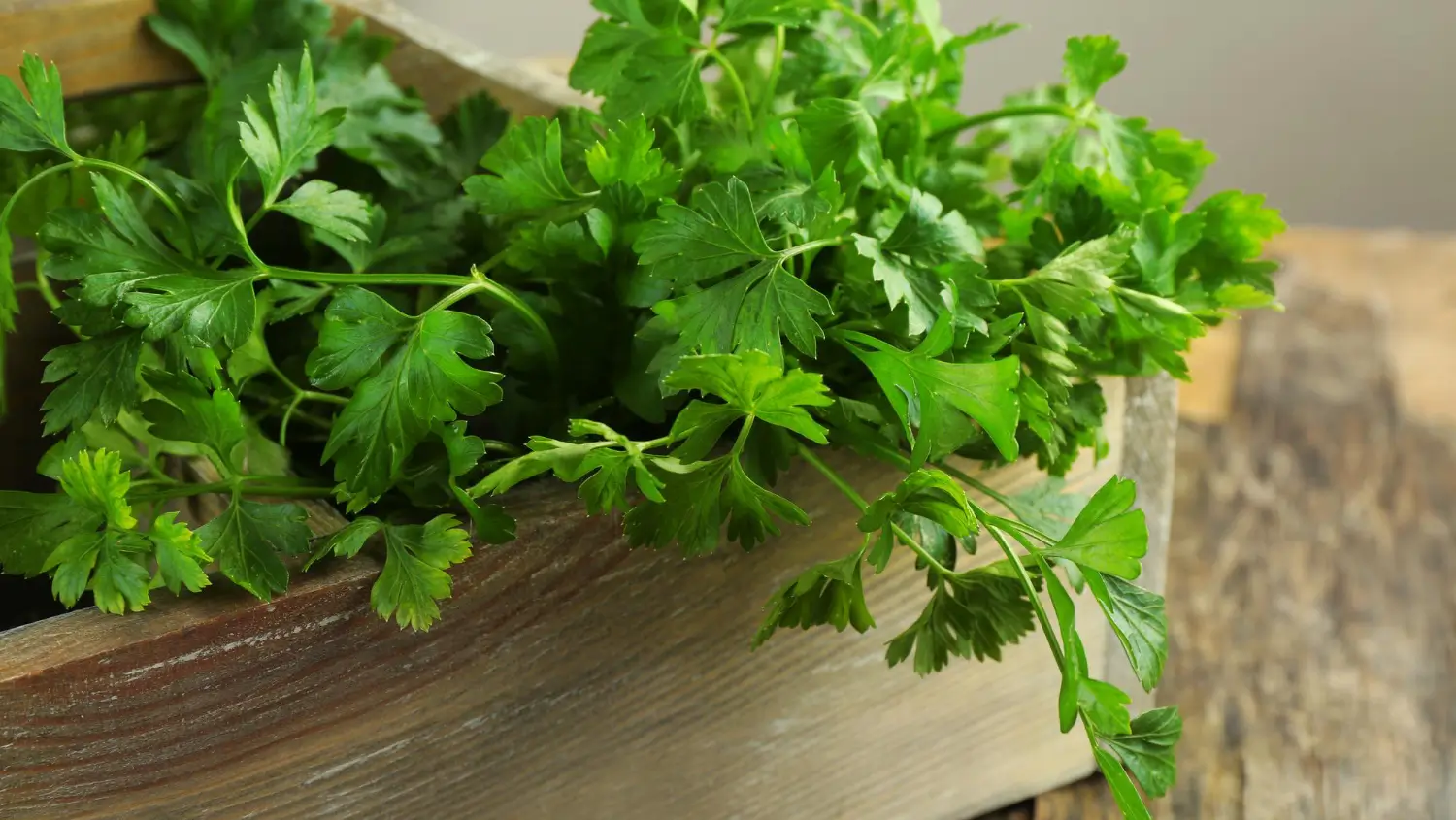
August 24, 2025

Growing herbs at home is a good way to enjoy fresh ingredients right from the kitchen or garden. Homegrown herbs taste fresher and have a stronger aroma than store-bought herbs. It is also a cost-effective startup because a small investment in seeds or plants can provide a continuous supply.
Cilantro is one of the most commonly used herbs in cooking. In some regions, it is called coriander, with the leaves and stems referred to as cilantro and the seeds as coriander seeds. This fast-growing herb has delicate, bright green leaves and a fresh, slightly peppery flavor with citrus notes. It is widely used in salads, curries, salsas, and soups, and its distinct aroma improves the taste of various dishes.
Growcycle supplies a range of gardening products, including seeds, soil nutrients, and grow lights, which can boost the growth and yield of cilantro plants. These products help gardeners manage the cultivation process effectively and enjoy fresh, flavorful cilantro leaves.
Cilantro (Coriandrum sativum) is a popular herb used in various cuisines worldwide. It belongs to the Apiaceae family, which includes parsley, carrots, and celery. The plant has two primary uses: its fresh leaves and stems are called cilantro, while its dried seeds are known as coriander.
The fresh leaves of cilantro have a bright, citrusy flavor. They are commonly used in salsas, curries, soups, and garnishes. On the other hand, coriander seeds have a warm, slightly nutty taste and are used as a spice in cooking. This dual-purpose nature makes cilantro a versatile herb to grow at home.
Cilantro is an annual herb that completes its life cycle in one growing season. The plant grows quickly and reaches maturity within 3 to 6 weeks.
Growing cilantro at home provides multiple advantages, from freshness and cost savings to health benefits and convenience:
There are several cilantro varieties suitable for home cultivation. Some popular options include:
Bolting is when cilantro prematurely produces flowers and seeds, leading to a decline in leaf production. Choosing the right variety can help delay bolting and extend the harvesting period.
Feature | Regular Cilantro | Slow-Bolting Cilantro |
|---|---|---|
Growth Rate | Fast-growing, matures quickly | Grows at a steady pace |
Bolting Time | Bolts within 4–6 weeks, especially in warm weather | Resists bolting for a longer period |
Harvest Duration | Short harvesting window | Allows multiple harvests before flowering |
Leaf Production | Produces flavorful leaves early but fewer before bolting | Produces more leaves before flowering |
Best Growing Conditions | Ideal for cooler months or short-term indoor growing | Suitable for warmer climates and longer growing seasons |
Recommended Varieties | Leisure, Santo | Calypso, Long Standing, Caribe |
Since cilantro is sensitive to temperature, choosing the right variety based on climate is essential for successful growth:
Regular cilantro types like Leisure or Santo grow well in cool conditions. Plant in well-drained soil and ensure it receives full sun to encourage healthy leaf growth.
Slow-bolting types, such as Calypso, Caribe, or Long Standing Cilantro, are better suited for warm regions. To prevent bolting, provide partial shade and keep the soil consistently moist.
Vietnamese Cilantro (Persicaria odorata) is an alternative that thrives in heat and humidity. Regular pruning and consistent watering help manage bolting.
Cilantro is a versatile herb that thrives with the right care. Let’s explore the ideal conditions and methods for planting cilantro to ensure a bountiful harvest!
Cilantro grows best in full sun to partial shade, requiring at least 4–6 hours of direct sunlight per day. However, too much sun can cause premature bolting in hotter climates. If growing in warm regions, providing afternoon shade can help extend the harvesting period.
A south-facing window is ideal for indoor cilantro, as it provides the most sunlight. If natural light is insufficient, supplement with grow lights for at least 12–14 hours a day to encourage healthy growth.
Cilantro prefers cooler temperatures between 50–85°F (10–29°C). It thrives in spring and fall but struggles in summer heat. High humidity levels can lead to fungal diseases, so proper spacing and ventilation are necessary. If growing indoors, use a fan or open windows for better airflow.
(a). Growing from Seeds
Soak the seeds in warm water for 12–24 hours. Then, gently crush the seed husk using a rolling pin or fingers to improve water absorption.
(b). Growing from Cuttings
Cilantro does not regrow well from cuttings like basil or mint. However, some regrowth is possible if the cutting has fresh leaves and a small root portion attached.
Cilantro needs soil that is light, well-draining, and rich in nutrients. The best soil mix for cilantro includes loamy or sandy soil that drains well. Adding organic compost provides the necessary nutrients for healthy growth. To improve drainage, perlite or sand can be mixed into the soil.
Cilantro grows best in soil with a pH level between 6.2 and 6.8, which is slightly acidic to neutral. It is important to test the soil's pH and adjust it if necessary. Adding lime can help raise the pH if the soil is too acidic. If the soil is too alkaline, peat moss or sulfur can lower the pH to the right level.
When growing cilantro indoors, choosing the right pots and containers is crucial. A 6 to 8-inch deep container is ideal for proper root growth. The pot should have drainage holes at the bottom to avoid waterlogging, which can harm the plant. Containers made of ceramic or plastic are great for retaining moisture, which cilantro needs to stay healthy.
Cilantro needs regular watering, but the soil should never be soggy. It is important to keep the soil moist but not too wet. Watering 2 to 3 times a week is usually enough, but it should be adjusted based on the weather and temperature. Using a watering can or misting method can help control the amount of water and prevent overwatering.
Overwatering or underwatering cilantro can cause problems. If the plant is overwatered, it may show yellow leaves, moldy soil, or drooping plants. If the plant is underwatered, it will have wilting leaves, dry soil, and slow growth.
Organic options like compost, fish emulsion, and diluted seaweed extract are great for keeping cilantro healthy. Synthetic options, such as a balanced 10-10-10 fertilizer, can also be used in smaller amounts to avoid overfeeding the plant. High-nitrogen fertilizers should be avoided because they can make cilantro grow too quickly and produce weak stems.
Cilantro can be affected by pests and diseases. Common pests include:
To control pests naturally, spraying the leaves with a neem oil solution or insecticidal soap can be effective. Introducing natural predators like ladybugs or parasitic wasps can also help keep aphids in check. Row covers can be used to protect plants from flying pests.
Cilantro can suffer from several diseases, including:
Bolting occurs when cilantro produces flowers and seeds too early, stopping leaf production. This can happen due to:
To delay bolting and enjoy a continuous harvest of leaves, gardeners can:
Cilantro leaves can be harvested once the plant is about 6 to 8 inches tall. It is important to wait until the plant has enough mature leaves to continue growing. Harvest the leaves when they are young and tender for the best flavor. The flavor is strongest just before the plant starts to flower.
To encourage regrowth, cilantro should be harvested by cutting the outer leaves first. Always leave the center of the plant intact, where new leaves will continue to grow. The best way to avoid damaging the plant is to use scissors or sharp garden shears. Never cut more than one-third of the plant at a time to ensure it can continue growing.
Once cilantro flowers, it will produce coriander seeds, which can be harvested for future planting. Wait until the seeds turn brown or yellow and are dry before picking them. Gently shake the seedheads into a container or use the fingers to remove the seeds. Store the seeds in a cool, dry place for next season’s planting.
For short-term storage, cilantro should be placed in the refrigerator. The best method is to trim the stems and place them in a jar of water, like a bouquet, and then cover the leaves with a plastic bag. This helps cilantro stay fresh for about 1 week. Alternatively, cilantro can be wrapped in a damp paper towel and stored in a resealable plastic bag in the fridge.
For long-term storage, cilantro can be frozen, dried, or turned into a cilantro paste:
Homegrown cilantro can be used in many different ways, making it a valuable herb to grow at home. Here are some popular uses:
Growing cilantro at home is a great and practical choice for gardeners and home cooks. It provides fresh, flavorful leaves that improve the taste of many dishes. Gardeners can enjoy a steady supply of cilantro by picking the right variety, following care tips, and dealing with common growing problems. Explore the Growcycle b2b marketplace to find the best varieties for home growing.
Disclaimer: This material is for informational purposes only and should not be relied on for legal, medical, financial, or any other form of professional advice.
Yes, cilantro can easily be grown at home, either in a garden or in containers indoors.
Cilantro can regrow after cutting if the center of the plant is left intact. Regular harvesting encourages new leaf growth, but the plant will eventually bolt and stop producing leaves.
To keep cilantro alive, provide it with regular watering, well-drained soil, and at least 4–6 hours of sunlight each day. Keep the soil moist but not soggy, and avoid high temperatures to prevent bolting.